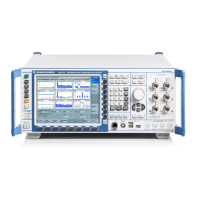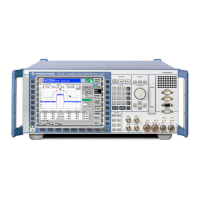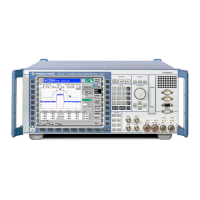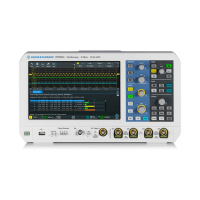Annexes
R&S
®
CMW500
294User Manual 1173.9463.02 ─ 06
7.1.2.1 HiSLIP Protocol
The High Speed LAN Instrument Protocol (HiSLIP) is the successor protocol for VXI-11.
It was defined by the IVI Foundation and was adopted by the LXI Consortium as the
recommended LAN procotol. For the R&S CMW500 it is the recommended protocol for
control via the LAN interface.
The HiSLIP protocol uses two TCP sockets for a single connection - one for fast data
transfer, the other for non-sequential control commands (e.g. Device Clear or SRQ).
HiSLIP has the following characteristics:
●
High performance as with raw socket network connections
●
Compatible IEEE 488.2 support for Message Exchange Protocol, Device Clear,
Serial Poll, Remote/Local, Trigger, and Service Request
●
Uses a single IANA registered port (4880), which simplifies the configuration of fire-
walls
●
Supports simultaneous access of multiple users by providing versatile locking mech-
anisms
●
Usable for IPv6 or IPv4 networks
Note that HiSLIP data is sent to the device using the "fire and forget" method with imme-
diate return, as opposed to VXI-11, where each operation is blocked until a VXI-11 device
handshake returns. Thus, a successful return of a VISA operation such as viWrite()
does not guarantee that the instrument has finished or started the requested command,
but is delivered to the TCP/IP buffers.
7.1.2.2 VXI-11 Protocol
The VXI–11 standard is based on the ONC RPC (Open Network Computing Remote
Procedure Call) protocol which in turn relies on TCP/IP as the network/transport layer.
The TCP/IP network protocol and the associated network services are preconfigured.
TCP/IP ensures connection–oriented communication, where the order of the exchanged
messages is adhered to and interrupted links are identified. With this protocol, messages
cannot be lost.
7.1.2.3 Direct Socket Communication
With direct socket communication the test application communicates directly with the
TCP transport layer.
Direct socket communication supports the transport of program messages (control com-
mands sent to the instrument) and response messages (returned values received from
the instrument). Service requests and polling are not supported in the raw socket mode.
The additional socket modes "Agilent" and "IEEE1174" are available for compatibility
reasons. The emulation codes for polling, service request and device clear messages
differ for these modes, as listed in the following table. See also: Emulation Codes
Interfaces and Connectors
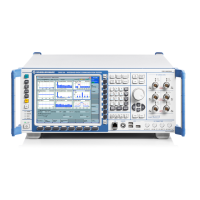
